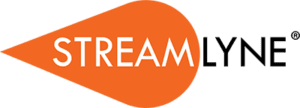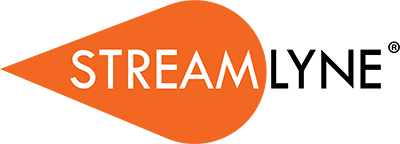
A software system is an interconnected series of programs or applications. It allows for a flow of data or information from one software to the next. This eliminates the need for manual processes and helps to prevent duplication of data entry. For those in research administration, a grant management software system helps institutions to manage project-related information across the entire grant lifecycle. It also allows for shared access to proposal and award information.
Here are some recommendations for getting the most out of your grant management software:
1) Familiarize yourself with the software
Adopting a software system, such as grant management software, can be a big undertaking. As such, our user institutions find it highly valuable to learn all about our software’s features and functionalities. The training and education happens before, during, and long after purchasing, including ongoing support.
If you are considering implementing grant management software, you can learn about it by reading user manuals, attending training sessions, and practicing in the software’s test environment. You can also attend vendor clinics and user conferences to learn from the experts and other enterprise users. This will give you a better sense of the software’s features and capabilities.
2) Take advantage of the software’s collaboration features
If expertly made, the software’s built-in collaboration features should eliminate the need for many processes outside the system. These features may include note fields, task assignments, approval routing, and document sharing. You can also use the software’s calendar and automatic reminder features to track project deadlines and milestones. Doing so will provide transparency and eliminate the need for manual reminders.
3) Use the grant management software’s reporting features
Presuming the grant management software has robust reporting capabilities, you can use it to generate reports on proposal and award activities. For consistent reporting, you can implement data validation rules. This will constrain field values and help to keep your reports clean.
Also, consider adding drop-down menus and implementing standardized naming conventions to ensure consistency. For example, standardized acronyms, such as DHHS or HHS for the U.S. Department of Health and Human Services, will prevent duplicate entries. As an added precaution, you can assign staff to conduct routine data checks to users are entering data correctly according to institutional procedures.
4) Customize the software to your needs
Well-developed grant management software should allow for some degree of user customization. For example, you should be able to modify fields, templates, and reports to capture the information needed for internal and external purposes. You should also be able to simplify and even automate many processes. Customizations such as these will help you to improve workflows, leading to efficiency and better resource allocation .
However, keep in mind that excessive customization can be costly in terms of time and money. Too many customizations may take the product too far away from the original intention, making upgrades difficult. To help you be as prepared as possible, we’ve provided some tips for streamlining processes prior to system implementation. This will provide clarity about the kinds of software customizations that are essential, as opposed to unanticipated overhauls or complexities that can be avoided in advance.
5) Provide training and support to users
If you are the product owner or software champion at your institution, your research staff will look to you for support. With the software vendor as a partner, you may want to create your own materials that are specific to your use case and institutional requirements. Here are some ideas about how to make your staff feel at ease:
- Develop training manuals and tutorials that users can access on-demand.
- Host live training sessions so users can practice and ask questions in real-time.
- Create a user group to answer questions as they arise and provide a clear process for reporting system issues.
Once you are deeply familiar with the software’s features and functionalities, you can also set up and document standardized workflows. These can include steps for proposal submission, review, approval, and reporting. We recommend documenting every step within a process, even if it seems intuitive. This includes any steps in processes that happen outside the software system, such as budget review and approval. This will help to ensure your staff has the resources they need to be successful.
6) Keep the grant management software current
Grant management software changes and evolves over time. As such, you will want to stay current with software updates and upgrades for optimal software performance. This includes system updates and upgrades, which allow you to take advantage of new features, and to fix system issues. Software that is up to date also helps to prevent unplanned downtime, which can be disruptive and costly.
A huge advantage of going with a cloud-based software provider is that updates can take place seamlessly, often behind the scenes. There is no need to take down the software. The vendor simply makes the necessary changes, sharing the accomplishments with a change log, so you know which features or fixes to look for. This ensures your software always stays current.
If you are looking to grant management software, ask the vendor whether this process is included in the subscription agreement. This is an important consideration. If you are required to pay extra for premium support or version upgrades, you may want to look elsewhere.
7) Back up data regularly
If you do not have a cloud based system, the responsibility of safety backups may fall to you. This can be tricky and cost-prohibitive to implement. However, having a secure backup will help to prevent data loss in case of technical issues or system failures. We advise storing your backup data in secure locations. Or better yet, choose a software vendor that runs off the cloud for added protection, which will shift the responsibility back to the vendor.
Summary
Because of the many stages involved in grant management, its associated software requires an interconnected system, rather than a standalone application. There are a handful of grant management vendors on the market, and the one that aligns closest with your institution’s needs and requirements should be the natural choice.
Some considerations that will factor into the decision are the software’s collaboration features, reporting, customizations, support, and backups. Make sure to review each of these aspects to ensure they will work for your purposes. The vendor should be ready and willing to help as well, so don’t hesitate to reach out.
If you have any questions at all about Streamlyne Research, our grant management software system, please contact us right away. We will connect you with one of our friendly and knowledgeable product experts. We look forward to hearing from you!

